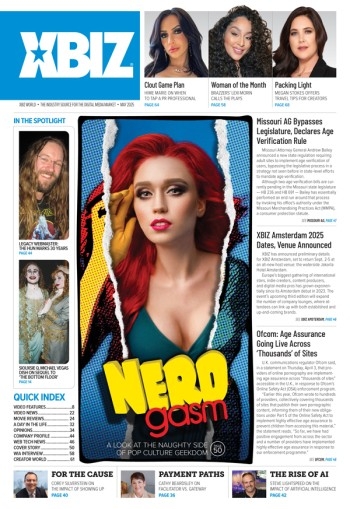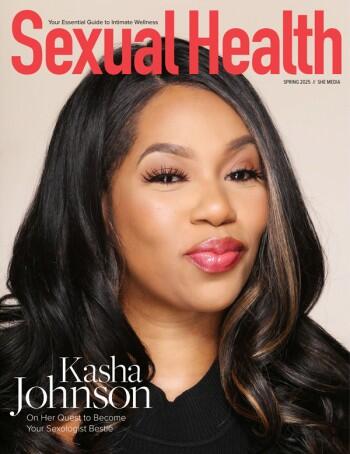The adult retail industry has come a long way when it comes to product quality. In the span of the last decade, we’ve seen manufacturers grow more aware of what materials make for high-quality toys and, in response, move away from using lower-quality materials that led to the greasy, melty, smelly dildos of years gone by.
Consumers have also become savvier when it comes to shopping for toys. They know that some materials are “good,” and others can be “bad,” which informs their buying decisions. But as we manufacturers know, it’s not as simple as “good” and “bad” — and what if the materials that are often deemed “bad” got that reputation from misinformation and misunderstanding?
Nowadays, PVC is used to create a wide array of high-quality body-safe products — adult and non-adult products alike.
Today we’re going to talk about one such material: PVC. We’ll look at what it is, why it developed such a bad rep, and how companies like Blush are working to create PVC toys that are body-safe, high-quality and accessible to the masses.
WHAT EXACTLY IS PVC?
PVC is an abbreviation for polyvinyl chloride, the third-most-produced plastic in the world. In the adult industry, PVC can be found in many pleasure products, including dildos and anal plugs.
PVC is incredibly versatile and can be used to make hard plastic and softer realistic toys. Its durability allows a well-manufactured PVC dildo to last decades. It is also the least expensive material, which allows the sex toys made with it to be priced well below their higher-end counterparts.
WHY DOES PVC GET SUCH A BAD REP?
There is a lot of misinformation online about PVC. Some of it stems from how PVC products were produced in the distant past. PVC used to be synonymous with phthalate-ridden products that leaked an oily substance through their packaging and smelled like a cheap shower curtain. With a reputation like that, it’s no wonder people think PVC is bad!
WHAT HAS CHANGED ABOUT PVC?
In recent years, as we have learned more about material safety and consumers have been more vocal about material preferences, companies like ours have worked to find ways to create PVC formulations that are rid of the unpleasant features that people have come to associate with the material. Nowadays, PVC is used to create a wide array of high-quality body-safe products — adult and non-adult products alike.
That said, many of the old beliefs about PVC live on, so let’s take a moment to bust some of the most pervasive PVC myths.
Myth: All PVC products contain phthalates.
Fact: Phthalates can be found in some plasticizers used to make PVC, making the material softer and more malleable. To ensure that products are indeed phthalate-free, manufacturers can obtain lab testing certificates that address the European Union’s REACH safety requirements and California’s Prop 65 requirements as part of their onboarding of raw materials vendors. Third-party lab testing can confirm that safety and quality are maintained after undergoing the various manufacturing processes. This ensures the final product meets or exceeds the standards set by the various government product safety agencies.
Myth: PVC products are porous.
Fact: We do not want to speak for other industries, but in the industry of making plastic “toys” — from children’s toys like collectible dolls, figurines, and bath toys to “toys” for grown-ups — PVC is without a doubt non-porous, even after it is softened by plasticizers.
Myth: PVC toys are low-quality.
Fact: You might be surprised to learn how broadly defined the term “quality” is in this industry, and it’s often a subjective measurement made by salespeople, buyers and end users. Some even associate a higher price with higher quality — not accurate!
The material alone isn’t what makes a product low- or high-quality. You’ll find low-quality silicone products on store shelves with $100-plus price tags and higher-quality silicone products with $50 price tags. There are high-quality PVC products with $30 price tags and lower-quality PVC products with $60 price tags, too.
What makes a product “high-quality” is fit and finish that reflects price point and overall value for the features and benefits it provides. For us, “high-quality” also includes maintaining strict quality control at the factory level, transparency with materials sourcing and testing, value to the end user and overall function. Does the product do what the package says it will? Will its components function and last for as long as is reasonable for its production cost and price point? Are we meeting demand without alienating shoppers with lower budgets? Everyone deserves access to quality pleasure products, and we know how to create quality at various price points, including using materials like PVC.
RELIABLE MEASURES OF QUALITY:
First, feel in relation to how smooth a product is. PVC has a lot of drag, which is the most significant factor that can make a product feel lower-quality than other soft plastic products. However, once lubricated, PVC feels just as slippery as any other product. And remember: TPE is only smooth because corn starch is added to it, and silicone is only smooth when a silicone-based coating is applied to the product.
Second, feel in relation to durometer. PVC can be made to be as firm and almost as soft as any other soft plastic.
Third, smell. There is a minimal smell to PVC, but it does smell like plastic. Be wary of products that use a synthetic fragrance to mask this “natural” plastic smell because the chemicals in such fragrances are known carcinogens.
And fourth, durability. PVC is by far more durable than TPE. It will melt at a lower temperature than silicone but has comparable tear resistance. As you can see, PVC offers the most value compared to any other soft plastic while giving up very little in quality.
PVC AND YOUR SHOPPERS
For retailers, knowing the truth about PVC can help expand your store’s selection. PVC is used to create some of Blush’s most popular product lines and some shoppers’ favorite items. The affordability of PVC toys makes these popular toys accessible to shoppers who otherwise might not be able to afford them. Armed with the truth about modern-day PVC, you will be able to assuage consumers’ concerns about the material.
So, there you have it. What you’ve heard about PVC isn’t the whole truth, and it’s essential to avoid the blanket statements that so often circulate about sex toy materials. Affordability is crucial, and people can’t always budget for $100-plus silicone that may or may not satisfy their desires! When made with intention and transparency, PVC is an affordable and versatile material that can give you and your shoppers a whole lot more accessible, body-safe options.
Eric Lee is the COO of Blush.







